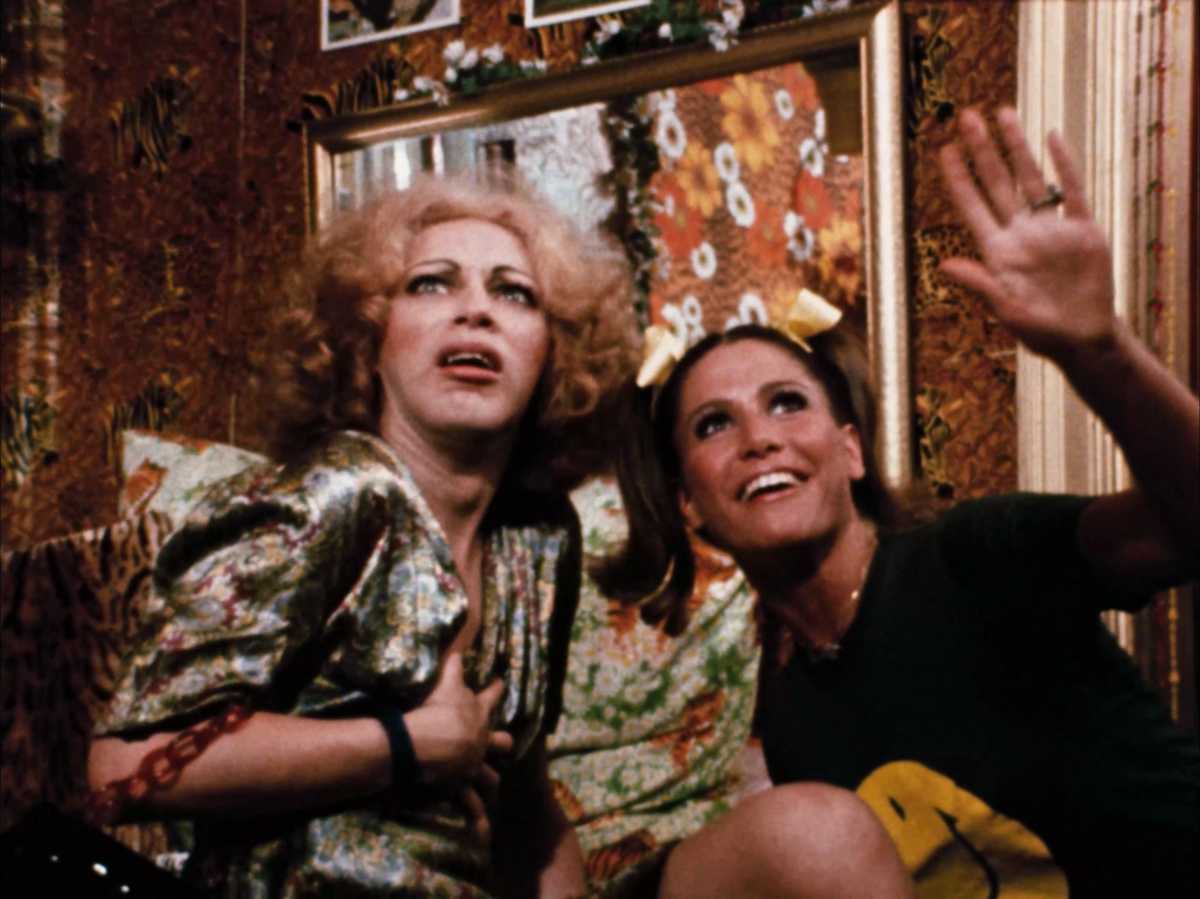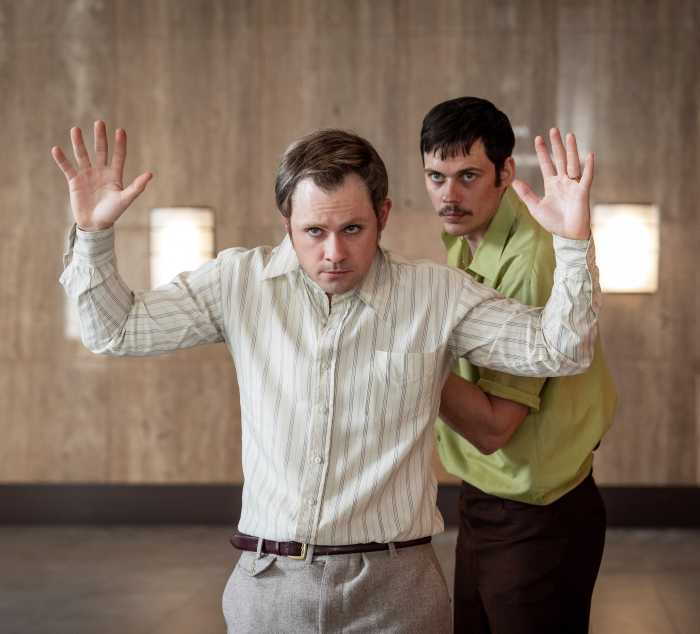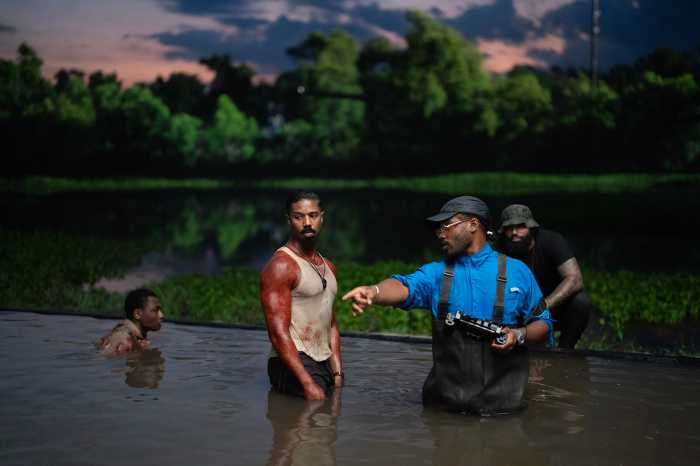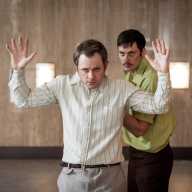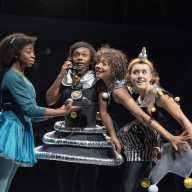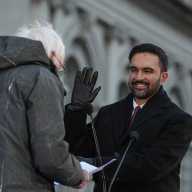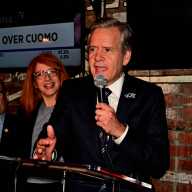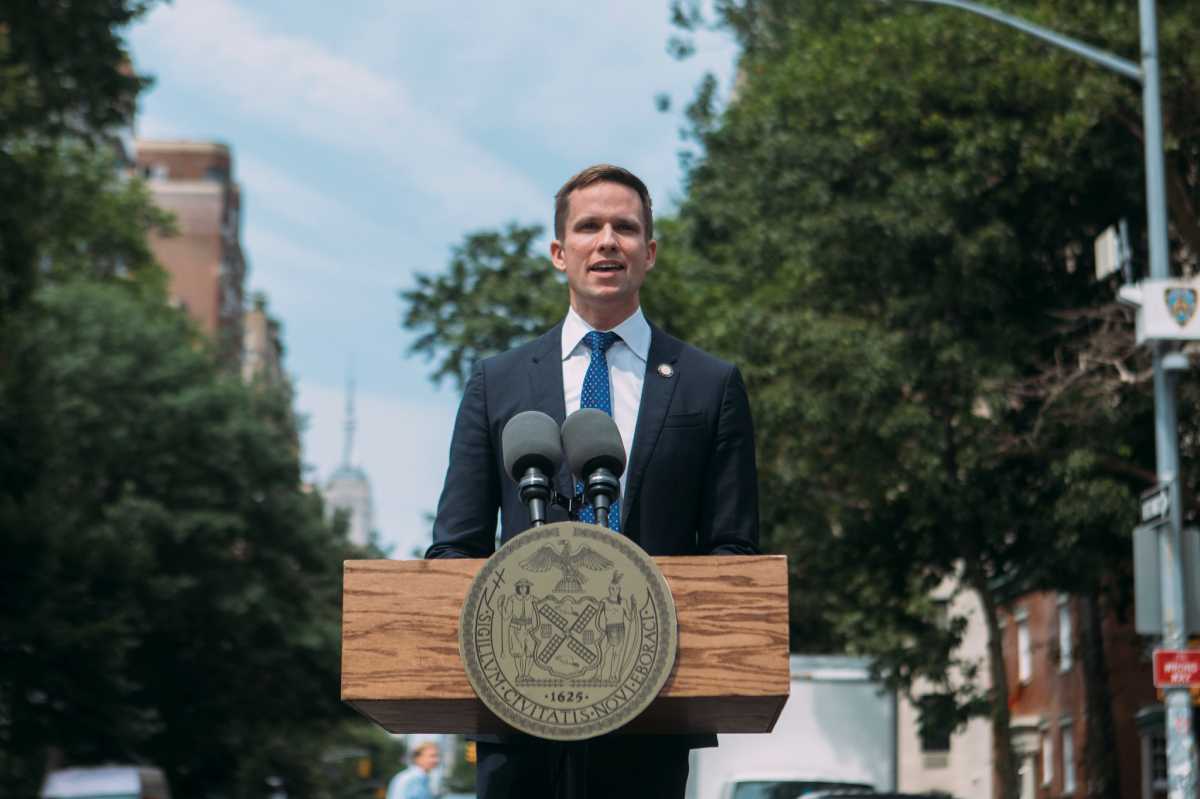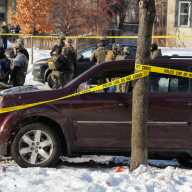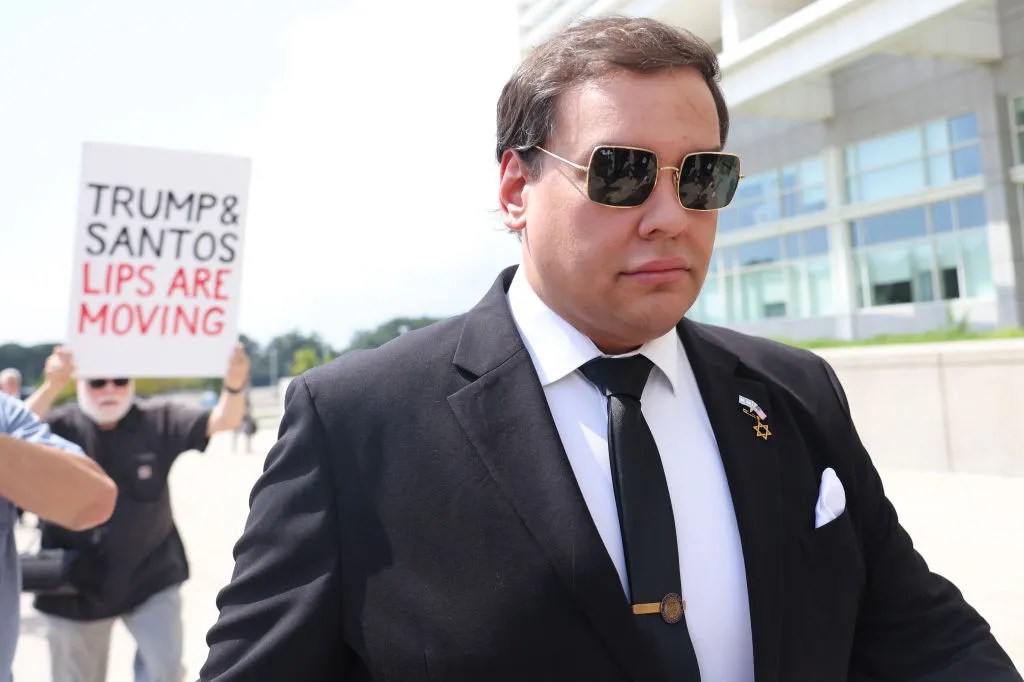Robert J. Kaplan’s “Scarecrow in a Garden of Cucumbers” is dedicated to the yearning for stardom. Originally released in 1972 and screening in a new restoration at Anthology Film Archives, it’s surprisingly devoid of cynicism. The “magic of the movies” is a cliché, somewhat tarnished now, but “Scarecrow in a Garden of Cucumbers” treats it with respect. This attitude is most evident in a scene where Eve (trans actor Holly Woodlawn) buys a movie ticket. As soon as she enters the theater, she’s transformed back into the little girl who first fell in love with the movies, complete with sepia-tinted cinematography. “Scarecrow in a Garden of Cucumbers” appropriates the names of famous movie characters: Stanley Kowalski (from “A Streetcar Named Desire”), Joe Buck (from “Midnight Cowboy”), Eve Harrington and Margot Channing (from “All About Eve”).
Alienated from her milquetoast parents, Eve leaves home to take the bus to New York, convinced she’ll become a movie star. When she gets out, she rides in a cab driven by a reckless, profane nun, who claims she’s working to raise money for children to see “Jesus Christ Superstar.” This sets the tone for the rest of the film, where almost anything can happen. She calls Mary Poppins (Tally Brown), meeting her for dinner. Dressed entirely in outrageous shades of orange, Mary’s carried aloft through Central Park by several men. After Eve goes shopping for clothes, she adopts a more glamorous look, signaled by the intertitle “the blossom becomes a flower.” At a party, she meets a film producer, played by Woodlawn in male drag, who assaults her.
“Scarecrow in a Garden of Cucumbers” is a relic of a brief period when Andy Warhol’s Factory launched several trans actors — Woodlawn, Jackie Curtis, Candy Darling — into a cult audience. Lou Reed sang about all three in his 1972 glam-cabaret hit “Walk on the Wild Side,” devoting the first verse to Woodlawn. Despite Warhol’s ironic labeling of his entourage as “Superstars,” they never came close to mainstream success. (Cynthia Carr’s biography of Darling reveals that although she was quite successful at landing film roles in the early ‘70s, she still lived in poverty, using black market hormones that may have led to her death from cancer.) Ironically, Warhol’s reactionary protégé, Paul Morrissey, was willing to give prominent roles to trans actors decades before more liberal directors would even consider this. Woodlawn turned in a first-rate performance in Morrissey’s 1970 “Trash,” bringing pathos to her role as the lover of a heroin addict.
J. Hoberman and Jonathan Rosenbaum’s history book “Midnight Movies” mentions “Scarecrow in a Garden of Cucumbers” glancingly, recalling that it played midnight shows in New York in 1972 and 1974. Yet they describe it as “an unsuccessful bid for cult status.” (“Trash” found more success on that circuit.) “Scarecrow in a Garden of Cucumbers” fits into the history of ’60s and ‘70s underground cinema, which often blurred gender lines and gave voice to the queerness aggressively repressed in American life. Kaplan’s tone is much lighter than his peers of the time. While John Waters is now a cozy, beloved figure whose most successful film was adapted into a Broadway musical, his early films revel in provocative acts of cruelty and jokes about violence. Where Waters had Divine eat dog feces, Kaplan staged a slapstick ice cream fight. The film turns political with a scene where she turns to a cop for help, only to be immediately arrested and called a junkie. But throughout “Scarecrow in a Garden of Cucumbers,” it feels as though Eve will ultimately be safe.
Kaplan makes no explicit critique of the limits and erasures of mainstream cinema, but they lie beneath the surface of his films. Gay Hollywood director George Cukor campaigned for Woodlawn to get an Oscar nomination for “Trash,” but it never materialized. Even now, Hollywood be unlikely to grant a woman as heavy as Mary a satisfying love life, much less show her lounging in bed with several himbos serving her whims. Even when “Scarecrow in a Garden of Cucumbers” points out its characters’ ridiculous aspects, it’s on their side. Still, out of all the people involved with it, Bette Midler (who performed two songs on the soundtrack, just before the release of her debut album) was the only one to find actual stardom, while Woodlawn struggled with repeated run-ins with the law and only found intermittent movie roles. Kaplan had to turn to porn to direct his only other film, the “Jaws” parody “Gums.” “Scarecrow in a Garden of Cucumbers” is a vision of what might have been.
Note: at the end of August, Anthology Film Archives is also reviving two other landmarks of queer cinema: Rainer Werner Fassbinder’s ultra-stylized 1982 adaptation of gay outlaw novelist Jean Genet’s “Querelle” and Toshio Matsumoto’s “Funeral Parade of Roses,” set in a milieu of rival drag queens in late ‘60s Japan. This program is inspired by Navid Sinaki’s novel about underground gay life in Iran, “Medusa of the Roses.”
“Scarecrow in a Garden of Cucumbers” | Directed by Robert J. Kaplan | The American Genre Film Archive | Opens at Anthology Film Archives Aug. 23rd

